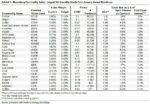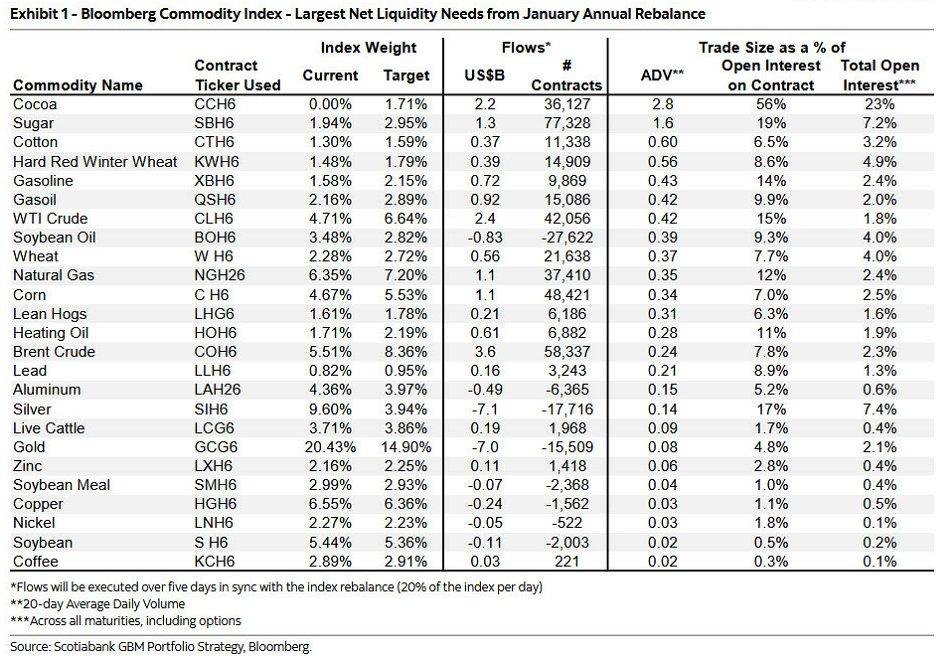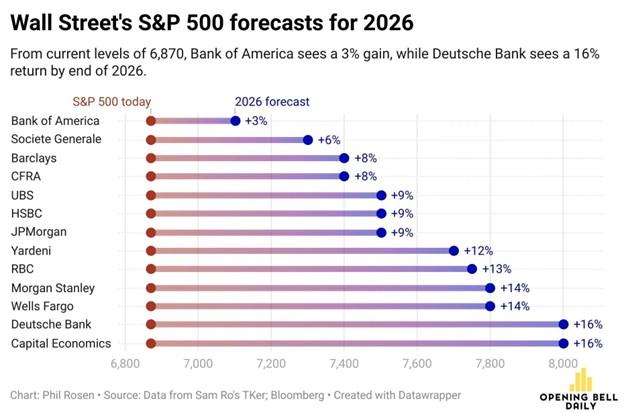Overview: The US 10-year yield is lower for the eighth consecutive session. The yield was near 3.90% at the end of August. It is now flirting with 3.60%. The two-year yield has fallen 35 bp since the end last month to about 3.55%. Although Vice-President Harris was seen winning last night's debate, it is not clear if it was a more important driver than the continued decline in US rates, despite the budget deficit not the discussed much in the debate. The dollar is trading heavily against nearly all the world's currencies today. Lower US rates and another BOJ official affirming the desire to continue to normalize monetary policy helped lift the yen. The dollar tested the early August low near JPY140.70. Disappointing UK July GDP has not pressured sterling, though it is a laggard today, edging only slightly higher. Despite the Mexico's Senate approving the judicial reforms, the Mexican peso has come back bid after the dollar settled above MXN20.00 yesterday for the first time nearly two years.
Equities in Asia Pacific fell today, with the Japanese markets leading the losses. Singapore was a noted exception. While the Stoxx 600 in Europe is treading water, the US index futures are around 0.5% lower. Bond markets have rallied. The 10-year rates in Asia Pacific played a bit of catch-up after the US rally yesterday. European benchmark yields are 1-3 bp lower, though the disappointing UK GDP has seen the 10-year Gilt yield tumble five basis points to a new three-month low (~3.76%). A weaker dollar and softer rates may be helping to lift gold today. It is the third consecutive advance in gold, which reached almost $2529 today. The record high set in late August was a little below $2532. October WTI has steadied after falling to a new low near $65 yesterday. Today's recovery to nearly $67.50 is stretching the intraday momentum indicators.
Asia Pacific
The news stream from the Asia Pacific region is light. The main development was another Bank of Japan board member (Nakagawa) reiterating what has already been signaled, namely that barring a new shock, the central bank intends on continuing to adjust policy. It may be useful to update and review recent correlations. First, the rolling 100-day correlation of changes in the dollar-yen exchange rate and the US 10-year yield is near 0.54, the upper end of the past 12-month range. It has spent little time in the past couple of years above 0.60. The 30-day correlation is a little above 0.76, the highest since June 2023. The Chinese yuan is also sensitive to the movement of US 10-year yields. The rolling 100-day correlation between changes of the offshore yuan's exchange rate and US 10-year yield reached 0.50 in late August, the highest in more than a decade and is near 0.47 now. The 30-day correlation is near 0.63 after rising to a high near 0.70 in late August, which is also a multiyear high. That raises the question of the correlation of the yen and yuan. It set a high at the end of last month near 0.73 and has eased to about 0.67, which is also above anything seen in more than a decade. The 30-day correlation peaked in June near 0.84 and is now close to 0.65.
It should not be surprising then that with the nearly six-basis point decline in the US 10-year yield yesterday followed by another three today, falling to its lowest level in fifteen months, dragged the greenback lower against the Japanese yen. Yesterday, it traded inside Monday's range but settled on its lows, and earlier today at was down 1.2% to test the spike low from early August near JPY141.70. We suspect that the $1.8 bln in options that expire today at JPY142.50 have been neutralized and may have added to some of the selling pressure. Since the low was recorded, the initial bounce appeared to stall in the European morning around JPY141.70. Today is the first day since the bearish outside down day last Friday that the Australian dollar been able to sustain upticks. It was sold to almost $0.6640 yesterday, the lowest since August 16, and slightly below the (38.2%) retracement of last month's rally. The Aussie is trading inside yesterday's range and enjoys a firmer bias. Still, it needs to take out yesterday's high near $0.6675 to be anything of note. Despite decline in US rates and gains in the yen, the offshore yuan could not recover yesterday, and the greenback settled above its 20-day moving average (~CNH7.1245) for the first time in over a month. Now, the US dollar is trading below yesterday's low (~CNY7.1175) against the offshore yuan. It reached CNH7.1075. The PBOC set the dollar's reference rate a little higher (CNY7.1182 vs. CNY7.1136). The onshore yuan is strengthening for the first time in four sessions.
Europe
The UK's economy disappointed by stagnating in July for the second consecutive month. Economists expected a 0.2% expansion to have been broad based. Industrial output fell by a whopping 0.8% (led by a 1.0% drop in manufacturing output). Economists expected a 0.3% increase after the 0.8% rise in June. It was flat in Q2, even though the economy expanded by 0.6%. Construction output fell by 0.4%. The market expected a repeat of the 0.5% increase reported in June. Recall that on a quarterly basis, construction output fell in Q4 23 and H1 24. The index of services activity fell by 0.1% in June and rose by 0.1% in July. The UK trade deficit swelled to GBP7.5 bln from GBP5.3 bln in June. Economists had looked for an improvement. Today's disappointment did not boost the chances of a rate cut next week but did boost the perceived chances of two cuts in the remainder of the year. The ECB meets tomorrow and there is a strong consensus for a quarter-point cut, a technical adjustment to narrow the difference between the deposit rate and the main refinancing rate, updated economic forecasts that will underscore the continuation of the easing cycle.
The euro made a marginal new low (~$1.1015) for the move since the year's high was recorded in late August, a little above $1.12. It has recovered to slightly above $1.1050 and took out yesterday's high by a couple of hundredths of a cent. A gain above $1.1070-$1.1085 would lift the tone. On the downside, the next important technical support area is $1.0990-$1.1000. Options for nearly 2.5 bln euros at $1.10 expire tomorrow. Despite the poor July GDP, sterling has not been punished, underscoring the importance of the dollar drivers. Sterling's push lower since the $1.3265 high in late August continued as sterling saw $1.3050 in the North American morning yesterday, unwinding all the post-UK jobs report gains. Sterling, like the euro managed to edge slightly above yesterday's high. Yet, the tone appears to be more consolidative. A push above $1.3125-$1.3145 lifts the tone.
America
The median forecast in Bloomberg's survey is for a 0.2% rise in the headline and core US August CPI. Such a print would see the headline rate ease to 2.6% year-over-year and the core rate may be steady at 3.2%. At an annualized pace, the three-month CPI would be around 1.2% and the six-month annualized rate would be about 2%. The core rate is stickier. A 0.2% increase in August would translate to a 2.0% annualized rate over three months, and 2.8% at a six-month annualized pace. At Jackson Hole, Fed Chair Powell was explicit, the full employment mandate has become more salient as the Fed's confidence of reaching the 2% target has increased. The moderation of prices is more widespread than a year ago. That means that barring a significant surprise, the CPI is unlikely to impact expectation for next week's FOMC meeting. Turning to Mexico, on the heels of Monday's softer CPI reading, a decline in July's industrial output is expected today. Economists look for a 0.2% fall, which would be the first since April. Mexico's industrial production rose by an average of 0.2% in Q1 24 and Q2 24. Separately, news that Mexico's Senate approved the controversial judicial reform bill (86-41) has not spurred a new decline in the peso, which has come back bid today.
The US dollar's recovery against the Canadian dollar extended yesterday, and the greenback settled back above what had previously been support--CAD1.3600--. Still, the heavier US dollar has seen in pullback to around CAD1.3585. A break of the CAD1.3580 area would be encouraging, but more important support is near CAD1.3560. On the other hand, a move above the CAD1.3635 area today could signal gains toward CAD1.3700. Latam currencies underperformed yesterday, with the bottom four emerging market currencies were from the region (~BRL -1.1%, COP -0.75%, MXN -0.70%, CLP -0.50%). After a few attempts were repelled, the dollar settled above MXN20.00 for the first time in nearly two years. The spike high on August 5 was near MXN20.2180. The dollar made a marginal new high near MXN20.1475 since then earlier today but has surrendered those gains and is trading below MXN20.00 in the European morning. A consolidative tone may be emerging. Brazil's August CPI was a little softer than expected (-0.02%) and sufficient to push the year-over-year rate to 4.24% from 4.50%, slightly more than expected. It probably is within the range the central bank expected, and in any case, unlikely to deter a hike at next week's meeting. The dollar is poised to challenge the band of resistance between BRL5.67 and BRL5.70.
Tags: #USD,$CNY,$JPY,Currency Movement,ECB,Featured,Mexico,newsletter,U.K.




































